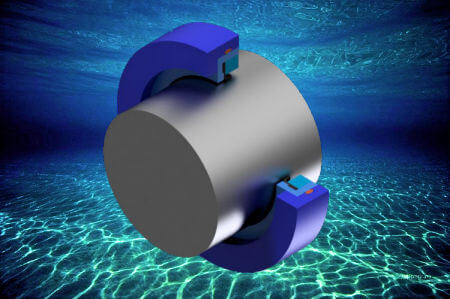When designing a rotary shaft seal, the shaft design is just as important as the seal. The mating hardware has a very significant impact on PTFE shaft seal performance in particular. In this article, we are going to look at what you need to consider when it comes to mating hardware for PTFE seals.
Surface Finish
Common sense tells us that a rough surface finish is going to be a problem for a PTFE because it will wear away the seal, but also be aware that a rough surface can result in leak paths that will compromise seal performance. Too smooth a surface can be a problem, too. There needs to be sufficient roughness to achieve the transfer of a thin film of PTFE from the seal to the mating surface.
The optimum surface finish for use with PTFE shaft seals ranges between 2 and 16 RMS. For liquids, a surface finish between 8 and 16 RMS is recommended. For non-cryogenic gases, the best surface finish is between 6 and 16 RMS. However, for gases and liquids at cryogenic temperatures the surface finish really needs to be much, much smoother at 2 to 4 RMS.
Polishing Method
When a shaft is turned on a lathe, the cutting tool edge should leave a helical groove on the shaft. Depending on the direction the shaft is turning relative to the direction of the groove, the groove can have a helical pumping effect that results in a leaking seal. For that same reason, spiral grinding of the surface is not recommended. The best polishing method to use is plunge grinding with an even ratio between the wheel and shaft speeds to eliminate this problematic lead.
Hardness
The mating surface needs to be of sufficient hardness to reduce the possibility of adhesion, lower the coefficient of friction between the seal and the shaft, and maximize seal life. For rotary motion, the recommended Rockwell hardness for shaft mating with a PTFE seal is 55C to 65C.
Shaft hardness and initial surface are closely related: the harder the surface of the shaft, the more important the initial surface finish. If the surface is soft (below 45C), then the seal will likely end up polishing the surface to the appropriate finish. If the surface is very hard (more than 65C) then it will not polish, making that initial surface finish much more important.
Conclusion
When selecting the mating hardware for a PTFE rotary shaft seal, keep in mind the surface finish, polishing method, and hardness if you want your seal to have a maximum life.
{{cta(‘9712eb3a-3703-496b-8d8e-6190ed59df50’)}}

